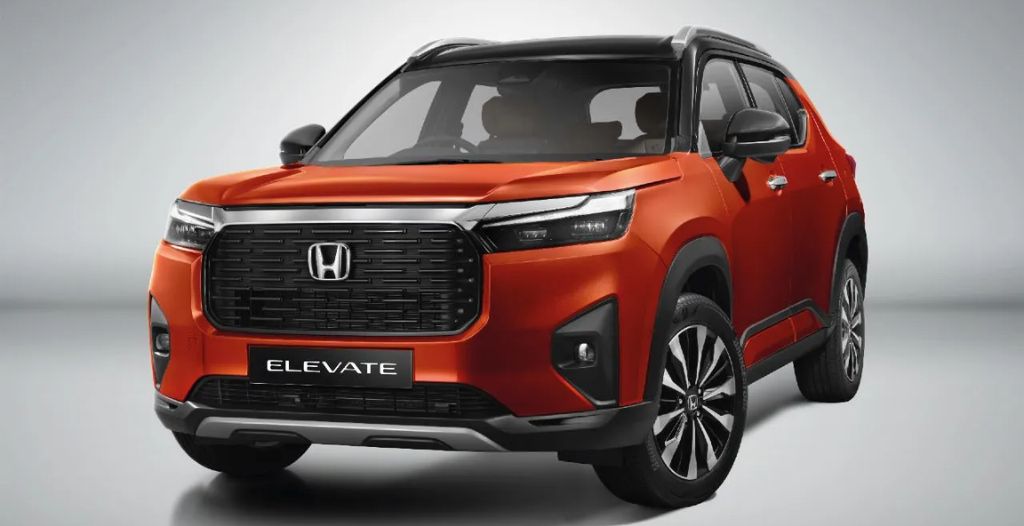Honda’s new midsize SUV, the Elevate, aims to address the shortcomings of its predecessor, the BR-V, and cater to the preferences of the Indian SUV-buying public. With a focus on elevating the driving experience, the Elevate combines Honda’s renowned engineering standards with a bold and imposing design, offering a smooth ride, efficiency, and spaciousness reminiscent of the City sedan, all while providing an elevated seating position.
1. Striking Front Design
The front design of the Honda Elevate grabs attention with its bold and tall appearance. The bonnet stretches horizontally from the windscreen to the headlamps, accentuating the SUV’s height. The large, near-vertical grille is predominantly a blanked-off black plastic panel, with the air intake occupying the bottom third. Triangular matte black fog lamp housings and a central scuff plate break up the bulk, while hockey stick-like LED Daytime Running Lamps add a touch of uniqueness.
2. Impressive Profile and Rear
The Elevate stands out with its long and tall profile, comparable to popular models like the Creta. However, the Honda offers an advantage with higher ground clearance at 220mm. While sharing similarities with the Seltos and Creta in terms of side profile, the Elevate maintains a clean and sculpted appearance, with minimal character lines.
The black plastic motif at the base of the doors reduces visual bulk, although some may find the chrome door handles a bit excessive. The rear features distinctive ‘double-inverted L’ tail-lights, creating a new Honda signature, while the black roof adds a touch of sophistication.
3. Refined Cabin Styling
Inside the Honda Elevate, the cabin design reflects a clean and restrained approach, drawing inspiration from the Honda City sedan. The dashboard showcases Honda’s typical high-quality craftsmanship, with rich-feeling dull wood trim and plush leatherette.
The cabin features a free-standing 10.25-inch touchscreen with an upgraded user interface, surrounded by stylish hexagonal brackets. Toggle-style climate control switches and a well-integrated horizontal wireless phone charging shelf contribute to the overall premium feel.
4. Comfortable and Spacious Seating
The Honda Elevate provides a comfortable and spacious seating arrangement. The front seats, similar to those in the City sedan, offer excellent support, while the tan leatherette upholstery enhances the interior’s aesthetics. The rear bench, although less comfortable than the City’s, features a split-fold function.
However, the Elevate excels in providing ample legroom and headroom, thanks to the scooped out roof section. Additionally, the SUV boasts a generous 458-liter boot with a low loading lip, ensuring practicality for various needs.
5. Feature Highlights and Room for Improvement
While the Elevate offers a host of desirable features, such as Honda Sensing ADAS (Advanced Driver Assistance Systems), wireless phone charging, wireless smartphone integration, and connected car technology, some notable omissions include a panoramic sunroof, powered driver seat, ventilated front seats, and USB Type-C ports. At the rear, there is only 12V charging and no USB provision. However, the Elevate does include convenient features like auto climate control, auto headlamps and wipers, and 60:40 split rear seats.
Conclusion: The Honda Elevate represents Honda’s answer to the demand for a well-designed, spacious, and feature-packed midsize SUV in the Indian market. With its bold exterior, refined interior, and impressive ride comfort, the Elevate aims to capture the imagination of SUV enthusiasts. While a few feature omissions may leave some customers wanting more, the Elevate’s overall package promises to offer a compelling choice for those seeking
Read More:

